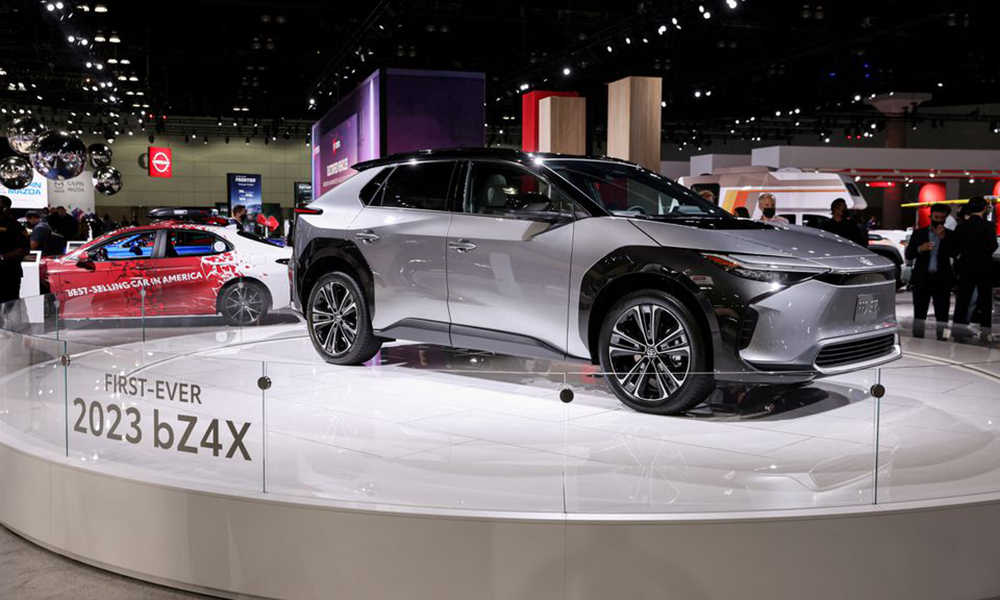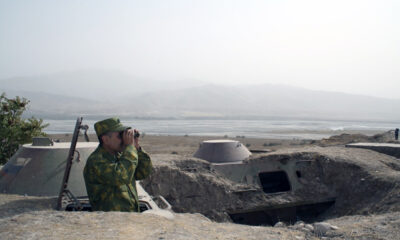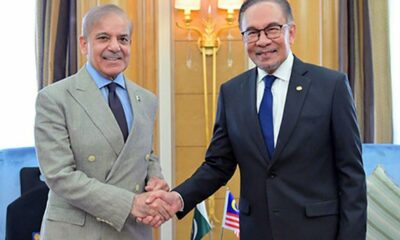Science & Technology
Toyota rolls out first battery electric car in cautious debut as rivals go full-throttle

Toyota Motor Corp (7203.T) rolls out its first mass-produced battery electric car in Japan on Thursday for lease only, a strategy the automaker says will help ease driver concerns about battery life and resale value but has raised analysts’ eyebrows.
Gasoline-electric hybrid models remain far more popular in Toyota’s home market than electric vehicles (EVs), which accounted for just 1% of the passenger cars sold in Japan last year, according to industry data. Still, the market is growing fast and foreign automakers including Tesla Inc (TSLA.O) are making visible inroads on the streets of cities such as Tokyo.
Bundling insurance, repair costs and a battery warranty into the deal, Toyota will lease the bZ4X sport utility vehicles (SUV) at the equivalent of $39,000 for the first four years. Cancelling in the first 48 months will mean an additional fee.
While EV acceptance has been slow in Japan, that will change, and Toyota could risk losing market share by focusing on a model of leasing rather than purchasing, said CLSA analyst Christopher Richter.
“Anything you are doing that’s making it harder to buy is maybe not a good thing,” he said.
“It’s a strategy I am not that fond of. It does signal that Toyota is taking the home market a little bit for granted.”
Toyota said in December it would commit 8 trillion yen ($62 billion) to electrify its cars by 2030.
Toyota aims to lease 5,000 of the SUVs in the current financial year – around the same amount of EVs that analysts estimate Tesla sold in Japan last year.
The automaker plans to start selling the bZ4X in other markets later this year, and pre-orders have already started in some European countries.
Toyota has not decided when it will start selling the cars in Japan, a spokesperson said.
‘DISPEL ANXIETY’
EVs became popular in Europe through lease programmes offered by employers and Toyota may be trying a similar tack to popularise electric cars, said Seiji Sugiura, a senior analyst at Tokai Tokyo Research Institute.
First-time customers are concerned about battery life and the potential fall in the trade-in value over time, said Shinya Kotera, president of KINTO, the Toyota unit offering the leases.
“It’s our role to dispel anxiety” toward EVs, he said.
Imports of battery EVs jumped almost three times to a record 8,610 vehicles in 2021, according to industry data. Analysts estimate roughly 60% of those were Teslas.
Still, Japanese automakers remain cautious about switching into the all-electric lane.
Toyota pioneered the hybrid more than two decades ago and retains big ambitions for both hybrids and hydrogen-powered vehicles, even as it is investing more to boost its battery EV line-up.
Rival Nissan Motor Co (7201.T) pioneered mass-market EVs with the Leaf in 2010 but will launch only its second battery EV model, the Ariya SUV, also on Thursday. The Ariya will be sold for the equivalent of $41,500, not including a government subsidy.
Honda Motor Co (7267.T) in April laid out a target to roll out 30 electric vehicle models globally by 2030.
Science & Technology
Ethiopian volcano erupts for first time in nearly 12,000 years
Ash from the eruption drifted across the region, spreading over Yemen, Oman, India, and parts of Pakistan.

The Hayli Gubbi volcano in Ethiopia’s Afar region has erupted for the first time in almost 12,000 years, sending massive ash plumes soaring up to 14 kilometres into the atmosphere, according to the Toulouse Volcanic Ash Advisory Centre.
The eruption began on Sunday and lasted several hours. Hayli Gubbi, located around 800 kilometres northeast of Addis Ababa near the Eritrean border, sits within the geologically active Rift Valley, where two major tectonic plates meet. The volcano rises roughly 500 metres above the surrounding landscape.
Ash from the eruption drifted across the region, spreading over Yemen, Oman, India, and parts of Pakistan. Satellite imagery and social-media videos captured a towering column of white smoke billowing into the sky.
The Smithsonian Institution’s Global Volcanism Program notes that Hayli Gubbi has no recorded eruptions during the Holocene, the period dating back about 12,000 years to the end of the last Ice Age.
Volcanologist Simon Carn of Michigan Technological University also confirmed on Bluesky that the volcano had “no record of Holocene eruptions.”
Science & Technology
Cloudflare outage easing after millions of internet users affected

A global outage at web-infrastructure firm Cloudflare began to ease on Tuesday afternoon after preventing people from accessing major internet platforms, including X and ChatGPT.
Cloudflare, whose network handles around a fifth of web traffic, said it started to investigate the internal service degradation around 6:40 a.m. ET. It has deployed a fix but some customers might still be impacted as it recovers service.
The incident marked the latest hit to major online services. An outage of Amazon’s cloud service last month caused global turmoil as thousands of popular websites and apps, including Snapchat, were inaccessible due to the disruption.
Cloudflare – whose shares were down about 5% in premarket trading – runs one of the world’s largest networks that helps websites and apps load faster and stay online by protecting them from traffic surges and cyberattacks.
The latest outage prevented users from accessing platforms such as Canva, X, and ChatGPT, prompting users to log outage reports with Downdetector.
Downdetector tracks outages by collating status reports from a number of sources. “We saw a spike in unusual traffic to one of Cloudflare’s services beginning at 11:20 UTC. That caused some traffic passing through Cloudflare’s network to experience errors,” the company said in an emailed statement.
“We are all hands on deck to make sure all traffic is served without errors.”
X and ChatGPT-creator OpenAI did not immediately respond to requests for comment. – REUTERS
Science & Technology
China sends its youngest astronaut to ‘Heavenly Palace’ space station

China’s Shenzhou-21 space rocket and its crew including the youngest member of its astronaut corps blasted off on Friday atop a Long March-2F rocket from the Jiuquan Satellite Launch Centre in northwest China, Chinese state media reported.
It was the seventh mission to the permanently inhabited Chinese space station since it was completed in 2022, Reuters reported.
Missions on China’s Shenzhou-21 spacecraft involve trios of astronauts on six-month stays in space, with veteran astronauts increasingly replaced by younger faces. First-timers Zhang Hongzhang, 39, and Wu Fei, 32 – China’s youngest astronaut to be sent to space – were picked to participate in the programme in 2020.
Commander Zhang Lu, 48, flew on the 2022 Shenzhou-15 mission.
FIRST SMALL MAMMALS ON SPACE STATION
The Shenzhou-21 astronauts will take over from the Shenzhou-20 crew who had lived and worked on board Tiangong, or “Heavenly Palace”, for more than six months. The Shenzhou-20 astronauts will return to Earth in the coming days.
The Shenzhou-21 crew were also joined by four black mice, the first small mammals to be taken to the Chinese space station. The mice will be used in experiments on reproduction in low Earth orbit.
Biannual launches have become the norm for the Shenzhou programme, which has in the past year reached new milestones with the deployment of Chinese astronauts born in the 1990s, a world-record spacewalk, and plans to train and send the first foreign astronaut, from Pakistan, to Tiangong next year.
The rapid advances have raised alarm bells in Washington, which is now racing to put a U.S. astronaut on the moon again before China does.
Both countries are also competing in nascent institution-building efforts, with the U.S.-led Artemis Accords on lunar exploration matched up against the Chinese and Russian-led International Lunar Research Station.
-

 International Sports3 days ago
International Sports3 days agoStar-studded squads set to ignite DP World ILT20 Season 4
-

 Latest News4 days ago
Latest News4 days ago10 Afghans killed in Farah border shooting by Iranian forces
-

 Sport5 days ago
Sport5 days agoAfghanistan deepens ties with Uzbekistan through new cricket development partnership
-

 Business4 days ago
Business4 days agoAriana Airlines deepens cooperation with Turkish Airlines
-

 Latest News4 days ago
Latest News4 days agoUN Security Council to review rising Afghanistan–Pakistan tensions
-

 Sport5 days ago
Sport5 days agoUAE Bulls clinch first Abu Dhabi T10 title with dominant 80-run victory
-

 Latest News3 days ago
Latest News3 days agoChina urges Tajikistan to protect citizens after border attack
-

 Latest News3 days ago
Latest News3 days agoSituation along Afghan-Tajik border “not stable,” says Dushanbe

























